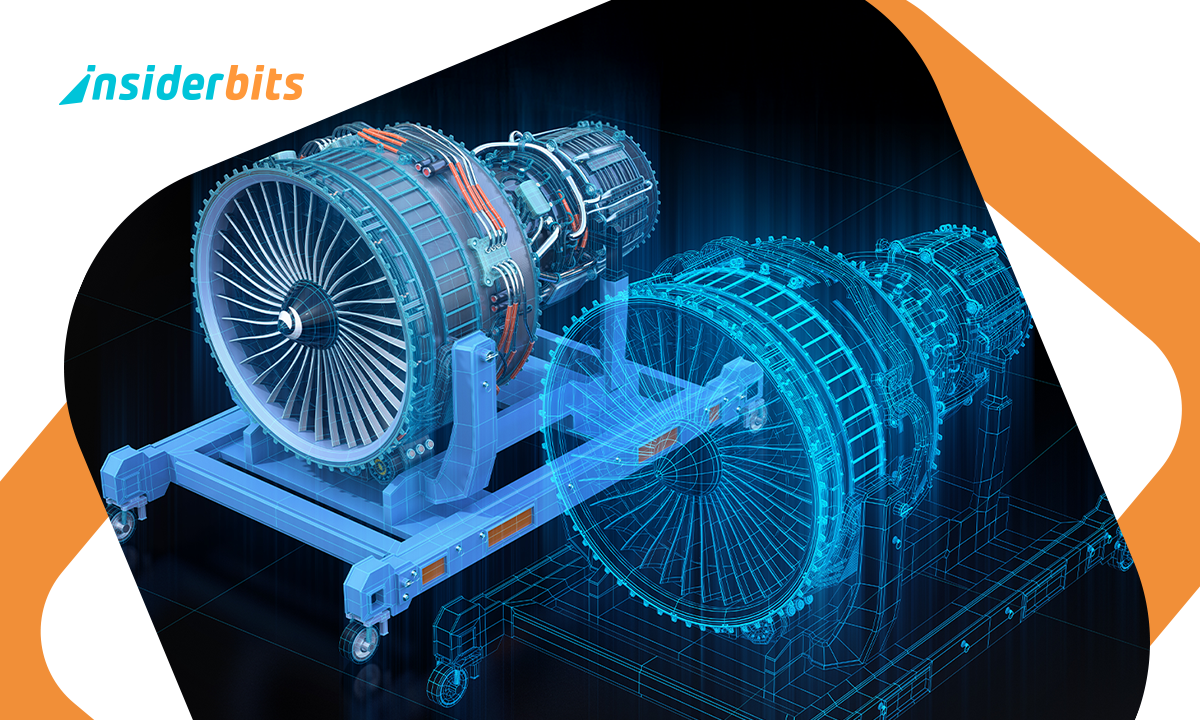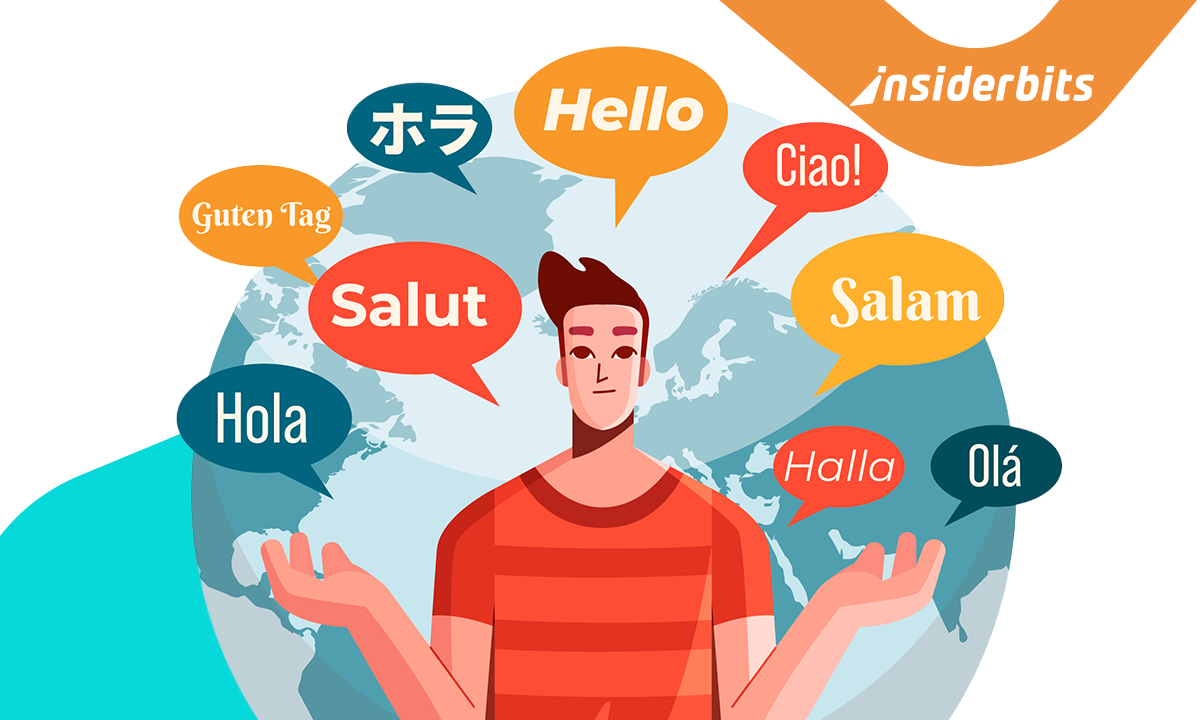Imagine a virtual version of yourself making decisions, learning from your data, and predicting outcomes. That’s the magic behind digital twins, and it’s closer than most think.
From factories to hospitals to personal apps, these lifelike models are gaining traction fast. Major tech players are pushing boundaries, and individuals might soon have their own versions.
Insiderbits put together a practical guide on what’s happening and what’s coming next. Curious how your digital twin might shape the future? Keep reading and see what’s ahead.
Related: Augmented Reality Benefits That Will Redefine 2025
What Are Digital Twins and Why Are They So Important?
A digital twin is much more than a 3D model. It’s a dynamic system that mirrors real-world objects or processes, constantly evolving based on live input and conditions.
Developed for aerospace and manufacturing, these replicas are now branching into healthcare, smart cities, and more. Their flexibility makes them a powerful asset across industries.
The growing interest in digital twins signals a shift in how humans interact with systems, using simulations not only to understand but also to predict and optimize complex behaviors.
From Physical to Virtual: The Core Idea Behind Digital Twins
Imagine a bridge that not only shows structural stress but reacts to traffic in real time. That’s the heart of the concept: a real object mirrored virtually.
This virtual version updates constantly, built with data from sensors, software, and sometimes even humans. It’s not static. It changes as the physical object evolves or faces new conditions.
How Real-Time Data Powers These Hyper-Realistic Models
Sensors act as the eyes and ears, sending streams of real-world data to the virtual twin. Everything from temperature shifts to usage patterns helps refine its behavior constantly.
In industries like logistics, smart buildings, and energy, digital twins use this continuous input to simulate outcomes, troubleshoot issues early, and improve efficiency with astonishing precision.
How Digital Twins Are Revolutionizing Business and Personal Life
Businesses test ideas virtually before real-world rollout, saving time and money. These simulations help avoid mistakes and adapt quickly to changing conditions and demands.
Medical teams use patient-specific models to predict treatment outcomes. It’s transforming care plans, making medicine more personal, and reducing risks by planning ahead with precision.
From smart homes to corporate offices, digital twins are powering better choices. By mirroring systems and behavior, they unlock new ways to live, work, and improve daily routines.
- Smarter Manufacturing Decisions: companies use real-time simulations to test ideas, improve production, and reduce waste before anything reaches the factory floor;
- Improved Healthcare Planning: doctors can use digital models of organs or treatments to customize care and predict health outcomes with greater precision;
- Safer Product Design: engineers detect design flaws early through simulations, avoiding costly errors and building better-performing devices for consumers;
- City Infrastructure Management: cities use digital twins to monitor traffic, energy, and public safety, making services faster, cheaper, and more responsive to needs;
- Personal Data Insights: individuals track habits, movement, or health through apps that apply twin principles, helping them make better choices each day.
Related: Everyday Magic: Benefits of Augmented Reality
Why Tech Companies Are Betting Big on Digital Twin Technology
Tech giants are pouring resources into next-gen simulation tools that rethink how we interact with machines, environments, and ourselves. The race to dominate this space is heating up.
From immersive visualization to predictive modeling, platforms are changing how companies operate. What once felt experimental is now a central piece of many digital strategies.
Siemens Digital Twin
| Pricing: | Free. |
| Available For: | Web. |
Siemens offers a smart way to connect real products with digital systems. Their platform helps businesses test ideas, predict outcomes, and work more efficiently before building anything.
By linking sensors and real-time data, digital twins in Siemens software can mirror machines, products, or entire factories. This opens space for smarter decisions with fewer risks.
Engineers use the Siemens Digital Twin to spot issues early, improve performance, and cut costs. It brings value across industries like energy, transportation, and manufacturing.
Instead of guessing, teams can simulate different situations and fix problems before they happen. It is a practical tool that keeps getting smarter over time.
Highlights from Siemens Digital Twin
- Real-Time Simulation: simulates scenarios quickly, helping teams test outcomes in advance and reduce risks during the design and production stages;
- Predictive Maintenance: tracks equipment conditions constantly to detect problems early and avoid costly failures in high-demand operations;
- Smart Integration: uses digital twins to link real assets with data-driven models, improving decision-making and reducing trial-and-error processes;
- Flexible Application: adapts to various industries without losing precision, offering consistent performance across energy, health, and industrial environments.
Ansys Twin Builder
| Pricing: | There’s a 30-day free-trial available. |
| Available For: | Web. |
Ansys Twin Builder helps companies create smart models of machines, devices, or systems. These models are used to test ideas safely before building anything real.
The software brings digital twins to life by combining data, physics, and simulation. This makes it easier to predict performance, fix issues early, and save money.
It is widely used in sectors like automotive, aerospace, and energy. Engineers rely on it to improve products, reduce errors, and boost efficiency without guesswork.
Ansys Twin Builder also connects with IoT platforms, helping teams monitor real-time behavior and keep things running smoothly across the entire product lifecycle.
Highlights from Ansys Twin Builder
- Multiphysics Simulation Support: allows users to combine electrical, mechanical, and thermal analysis in one model to reflect real-world behavior more accurately;
- Real-Time Monitoring: connects simulations with live sensor data, enabling teams to compare predictions with actual performance and react quickly to changes;
- Digital Integration: builds powerful digital twins using real data and simulation, helping engineers optimize systems and detect problems before they escalate;
- IoT Platform Compatibility: works with leading IoT systems, making it easy to track and control assets remotely with updated insights and alerts.
IBM Digital Twin Exchange
| Pricing: | Access is free, but specific assets involve a purchase. |
| Available For: | Web. |
IBM Digital Twin Exchange is a marketplace where companies can find digital models of real-world assets, helping them build smarter solutions with less development time.
The platform connects manufacturers, developers, and third-party providers in one space. This collaboration helps speed up innovation while keeping everything easy to access.
It supports the creation and use of digital twins by offering ready-made data packages, reducing setup complexity and allowing businesses to focus on improving system performance.
By using trusted asset models, teams can test ideas, reduce errors, and deliver better products without starting every project entirely from scratch.
Highlights from IBM Digital Twin Exchange
- Ready-Made Asset Models: offers downloadable digital versions of machines, components, and systems to help companies save time and reduce complexity;
- Collaboration-Friendly Platform: connects manufacturers, developers, and data providers, making it easier to improve product lifecycle management;
- Support for Digital Twin: supplies prebuilt data sets that help users create digital twins faster, improving simulation accuracy and real-world performance tracking;
- Simple Integration Tools: designed to work with IBM’s ecosystem and other platforms, enabling smoother data flow between physical assets and digital environments.
How You Might Have Your Own Digital Twin by 2026
What once required industrial sensors and heavy computing is getting more personal. Tech is evolving fast, and it’s starting to follow us home and onto our phones.
As machine learning becomes more accessible, digital modeling tools are now built for individuals. They’re starting to shape personal productivity and even mental wellness tracking.
By 2026, many people may have access to digital twins without realizing it, using apps and wearables that learn habits, predict needs, and respond to real-world data.
Personal Twins for Health, Work, and Lifestyle Optimization
Imagine a system that monitors sleep, stress, and daily movement while recommending tiny changes that add up. This kind of support is already being tested with wearable integrations.
Work routines, fitness goals, and even daily to-do lists are being refined with predictive models that learn patterns over time. These tools could soon become personalized digital coaches.
From Elite Tech to Everyday Use: The Price Drop Factor
Just a few years ago, this kind of simulation required enterprise-grade infrastructure. Today, similar power fits into a smartwatch or smartphone thanks to better chips and software.
Lower hardware costs and app-based interfaces are helping shrink the gap between research labs and consumers. The result is smarter tools that regular users can actually afford.
Will Your Smartphone Become Your Digital Twin Hub?
Some apps are already tapping into real-time behavior, location, and biometrics. That data, when processed with smart algorithms, is quietly forming the backbone of future digital twins.
With processing power in your pocket and cloud access always on, the phone might soon become the control center for a virtual version of you that keeps learning.
Related: Exploring the Metaverse: The Best Virtual Reality Experiences of 2025
The Future of Digital Twins: Privacy, Ethics, and Innovation
As this technology grows more personal, so do the questions. Who controls the data? How can users trust that their information stays secure and used responsibly?
Tech progress often outpaces regulation, and digital replicas raise concerns that don’t have easy answers. Transparency and consent are becoming urgent topics in the conversation.
New uses for digital twins are emerging quickly, but ethical design and privacy safeguards will shape how deeply this technology integrates into daily life and future decision-making.
Hyper-Personalized Twins Will Be Built by Design
Soon, people might not just use apps, they’ll become part of them. Data will shape models of behavior, preferences, even emotional reactions in real time.
These advanced models won’t be accidental. Devices, cars, and even furniture may be designed to feed your digital twin continuously, tailoring your environment automatically.
Consent Will Become a Core Design Principle
As digital twins reflect more personal behavior, gaining informed consent will no longer be optional. Systems must explain clearly what data is collected and why.
Expect governments and developers to work together, crafting standards to protect individuals. Your Digital Twin may be powerful, but it must respect your privacy limits.
Public Spaces May Get Their Own Twins
Imagine parks, streets, and stadiums that model foot traffic and safety in real time. Cities could use these systems to improve flow and security.
Digital replicas of public places might predict accidents, improve lighting, or monitor crowd movement during events, all while balancing privacy with practical innovation.
Creativity and Identity Will Intersect with Data
Artists and creators could develop digital versions of themselves to produce, collaborate, or perform in virtual spaces using their digital twins.
This blending of personality and code may reshape how we define presence, authorship, and even fame in the digital era of creation and expression.
The Digital and Physical Are Now Connected
Technology is getting smarter, faster, and more personal. Virtual replicas are no longer science fiction but practical tools that may soon become part of everyday decisions and routines.
Insiderbits dug into the rise of digital twins to show how this technology is shifting from labs to daily life, with real-world benefits already unfolding around us.
Curious about what else is shaping tomorrow? Keep exploring our website! Insiderbits covers emerging tech, clever apps, and smart tools that actually matter.





